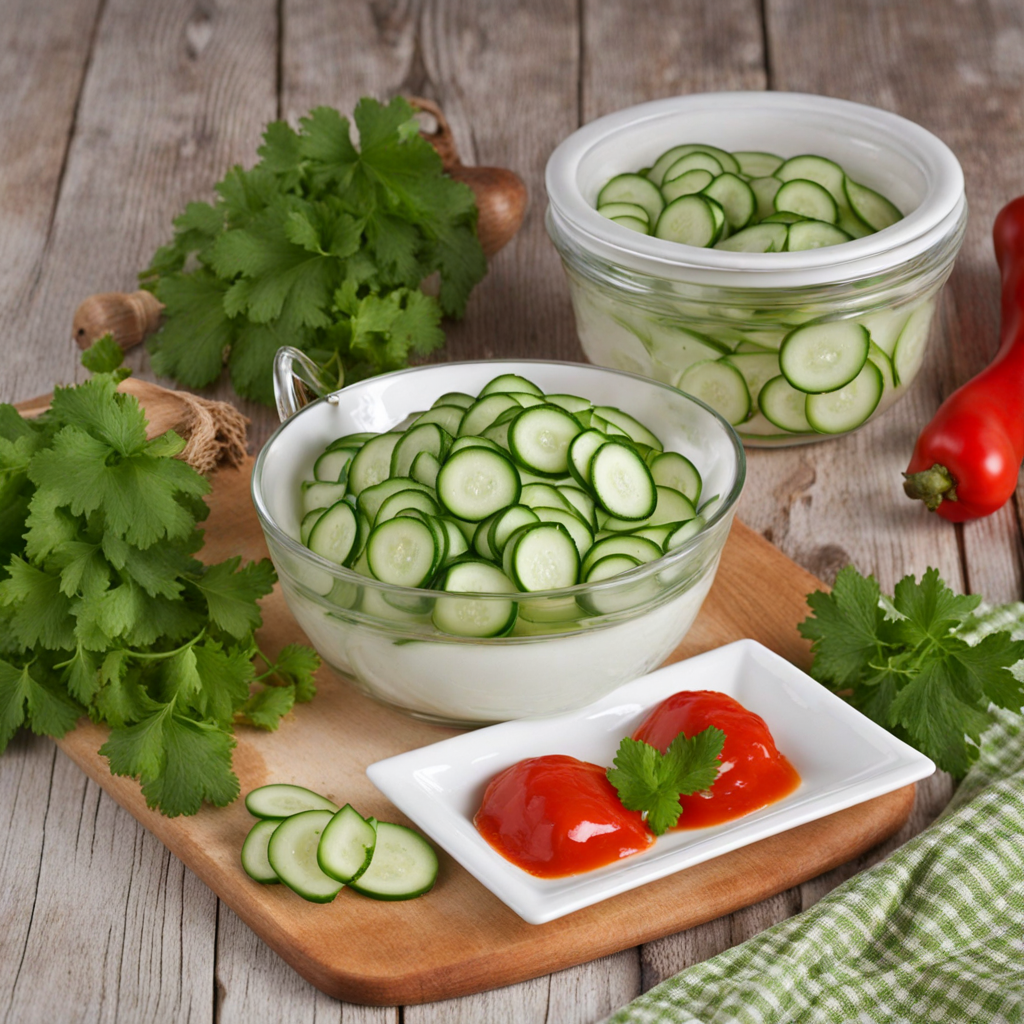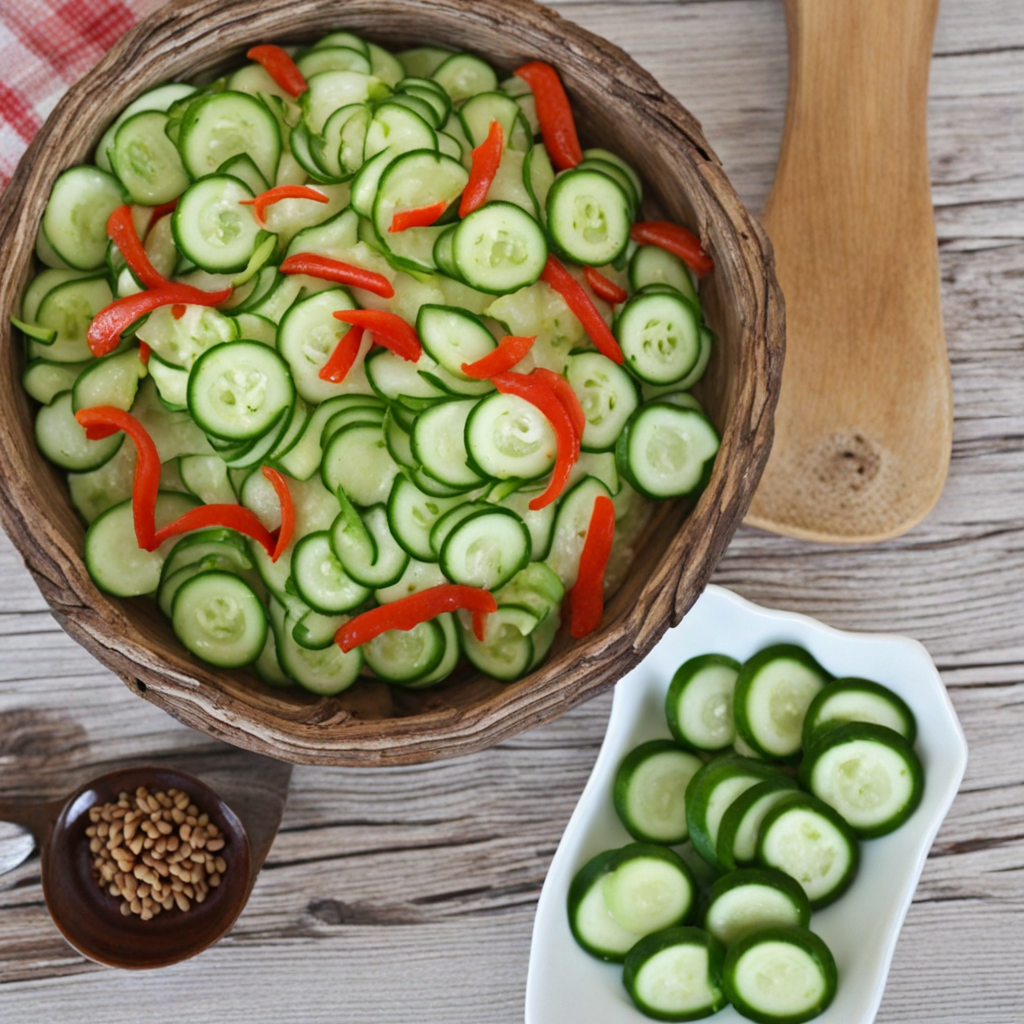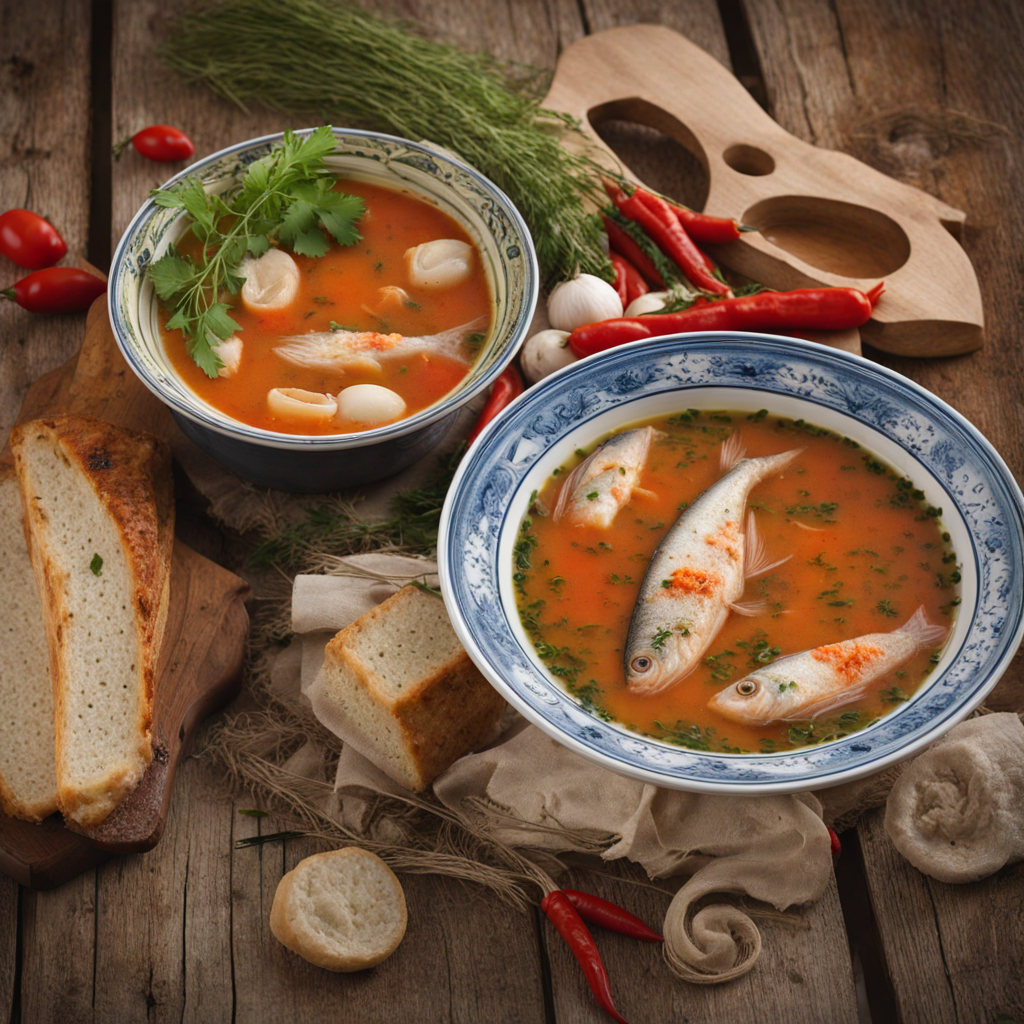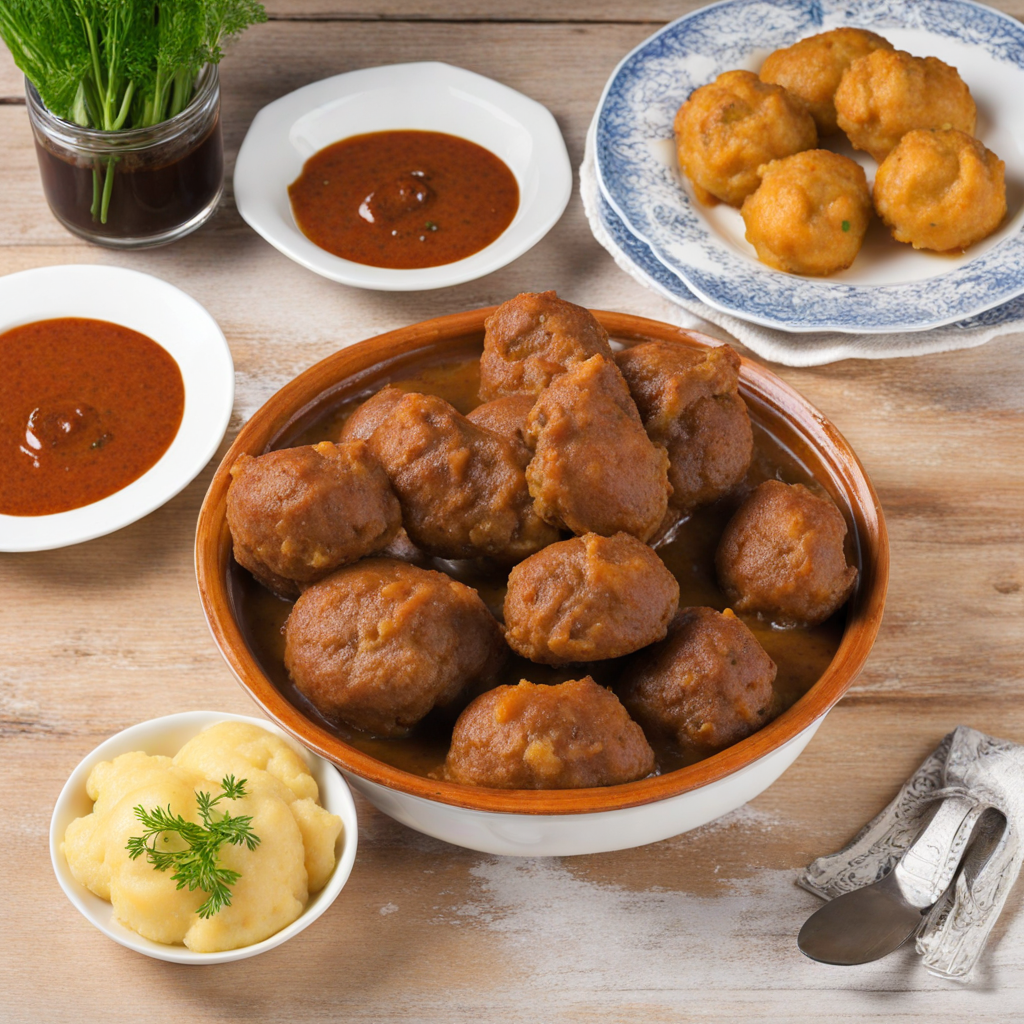Uborkasaláta
Uborkasaláta, a delightful Hungarian cucumber salad, is a refreshing dish that perfectly captures the essence of summer with its crisp textures and vibrant flavors. This salad primarily features thinly sliced cucumbers, which are often peeled for a softer bite, and generously sprinkled with salt to draw out their natural moisture. The resulting crunch is complemented by a drizzle of vinegar, which adds a tangy note that balances well with the sweetness of the cucumbers. The salad is often garnished with freshly chopped dill, infusing a fragrant herbal aroma that elevates the overall taste experience. To enhance the flavor profile, Uborkasaláta may also include finely chopped onions, which contribute a subtle sharpness that harmonizes beautifully with the cucumbers. Some variations incorporate a touch of sour cream or yogurt, enriching the dish with a creamy texture and a mild tang that contrasts with the crispness of the vegetables. This combination not only makes the salad more satisfying but also adds a layer of richness that pairs well with grilled meats or hearty Hungarian stews. Uborkasaláta is not just a simple side dish; it embodies the Hungarian approach to fresh ingredients and seasonal produce. Served chilled, it is particularly refreshing on warm days and is often found at festive gatherings or family meals. Enjoying this salad is more than just tasting a dish; it’s an invitation to experience the vibrant culinary traditions of Hungary. Each bite offers a delightful crunch, a burst of flavor, and a reminder of the beauty of simple, well-prepared food.
How It Became This Dish
The History of Uborkasaláta: Hungary's Beloved Cucumber Salad Uborkasaláta, a quintessential Hungarian dish, is more than just a refreshing salad; it embodies the rich culinary heritage and agricultural traditions of Hungary. This simple yet vibrant cucumber salad has roots that date back centuries, reflecting the ingenuity of Hungarian cooks in transforming humble ingredients into delightful dishes. #### Origins and Ingredients The name "uborkasaláta" translates directly to "cucumber salad," with "uborka" meaning cucumber and "saláta" referring to salad. Cucumbers have been cultivated since ancient times, with their origins traced back to south Asia. They made their way to Europe via trade routes during the Roman Empire, eventually becoming a staple vegetable in the diets of various cultures, including Hungary. Hungarian cuisine, influenced by the country's geographical position at the crossroads of Europe, incorporates a variety of agricultural products, and cucumbers thrive in Hungary's fertile soil. The climate, characterized by hot summers and cold winters, allows for a significant harvest of cucumbers during the summer months, making them a popular ingredient for preserving and consumption. The traditional uborkasaláta recipe features fresh cucumbers, often sliced thinly, and dressed with a mixture of vinegar, sugar, salt, and sometimes sour cream. The salad may also include additional ingredients like garlic and dill, elevating its flavor profile. This blend of flavors highlights the Hungarian penchant for balancing sweet and sour, a hallmark of many traditional dishes. #### Cultural Significance Uborkasaláta holds a special place in Hungarian culture, often served as a side dish in family gatherings, festive occasions, and daily meals. It is particularly favored during the hot summer months when cucumbers are abundant, serving as a light and refreshing counterpoint to hearty Hungarian dishes such as gulyás (goulash) or töltött káposzta (stuffed cabbage). The salad's cultural significance extends beyond mere sustenance; it represents the Hungarian ethos of resourcefulness and simplicity in cooking. Traditionally, Hungarian households would prepare uborkasaláta as a way to preserve the harvest, utilizing vinegar to extend the shelf life of the cucumbers. This practice resonates with the broader history of pickling and preserving that is prevalent in Eastern European cuisines, where seasonal produce is often transformed into year-round staples. #### Evolution Over Time As Hungarian cuisine evolved, so too did uborkasaláta. In the 19th century, Hungary underwent significant social and political changes, which influenced its culinary landscape. The Austro-Hungarian Empire brought about a fusion of culinary traditions, and uborkasaláta began to incorporate more diverse flavors and ingredients, reflecting the multicultural influences of the time. In the early 20th century, as Hungarian immigrants spread across the globe, they carried their culinary traditions with them. Uborkasaláta became a staple in Hungarian-American communities, often served at family gatherings and festivals. The salad's adaptability allowed it to be embraced by diverse palates, with variations emerging based on regional preferences and available ingredients. In contemporary Hungary, uborkasaláta remains a beloved dish, reflecting both nostalgia and modern culinary trends. Chefs and home cooks alike experiment with new interpretations, adding ingredients such as yogurt, radishes, or even fruits like apples for a twist on the classic. The salad continues to embody the essence of Hungarian cooking: a celebration of simple, fresh ingredients transformed into flavorful dishes. #### Nutritional Value and Modern Adaptations Today's uborkasaláta is appreciated not only for its taste but also for its nutritional benefits. Cucumbers are low in calories, high in water content, and rich in vitamins and minerals, making uborkasaláta a healthy addition to any meal. As health consciousness has risen in recent years, this salad has gained popularity among those seeking lighter, more nutritious options. With the increasing influence of global culinary trends, uborkasaláta has found its way onto modern menus in Hungary and beyond. Innovative chefs are reimagining the classic recipe, using techniques such as fermenting the cucumbers or incorporating international flavors like sesame oil or chili flakes. These adaptations highlight the versatility of uborkasaláta while honoring its traditional roots. #### Conclusion: A Symbol of Hungarian Culinary Heritage Uborkasaláta is more than just a dish; it is a symbol of Hungary's culinary heritage, encapsulating the essence of the nation's agricultural bounty and its cultural traditions. From its humble origins to its place on modern tables, this cucumber salad has evolved while maintaining its core identity as a refreshing and flavorful side dish. As Hungary continues to embrace its culinary past while looking towards the future, uborkasaláta stands as a testament to the country's rich food culture. Whether enjoyed at a family gathering, a festive celebration, or as a simple accompaniment to everyday meals, uborkasaláta remains a beloved staple that connects generations of Hungarians to their history and to each other. It is a dish that speaks to the heart of Hungarian cooking: a celebration of simplicity, freshness, and the joy of sharing food with loved ones.
You may like
Discover local flavors from Hungary







